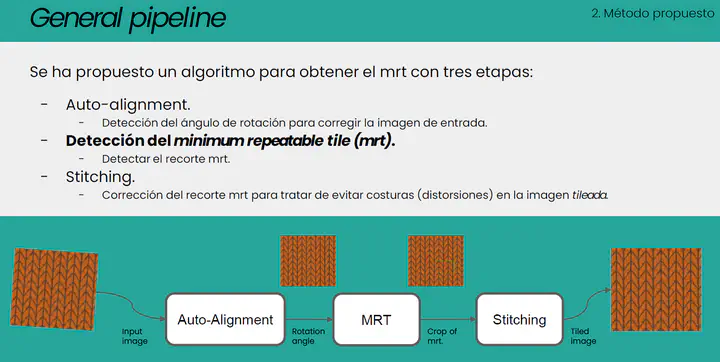
Summary
The fashion industry is undergoing digitalization to address its inefficiency, high textile waste, and environmental damage. Digital tools such as 3D modeling software, virtual reality, and artificial intelligence enable designers and manufacturers to create and visualize designs rapidly and precisely, reducing time and expenses. Texture rendering and digitizing fabrics are increasingly significant in the fashion industry, allowing for highly realistic simulations and renderings that can be used for various applications such as virtual clothing try-on and textile product visualization.
However, an open problem in computer vision is detecting the minimum repeatable tile (MRT) of a fabric, which refers to the smallest unit of a textile pattern that can be seamlessly repeated to create a larger pattern. This is essential for creating accurate digital representations of textile patterns, allowing the pattern to be scaled up or down without distorting its overall appearance. Texture mapping is crucial in fabric rendering and requires tileable and memory-optimized textures for efficient real-time rendering. Identifying the minimum repeatable tile is critical to creating realistic and high-quality texture maps for various applications, including video games and digital art.
Various traditional and modern approaches exist for detecting pattern repetition. This work focuses on a modern approach that uses a CNN to extract the activation maps of texture images. The aim of our work is to research and develop auto-tiling, i.e. an automatic process for the detection of the minimum repeatable pattern. This involves a three-stage process (auto-alignment, detection of the minimum repeatable tile and stitching), and an online demo has been created and deployed for users to test it. This work has been done with the company SEDDI, as it is intended to integrate this product into SEDDI Textura.